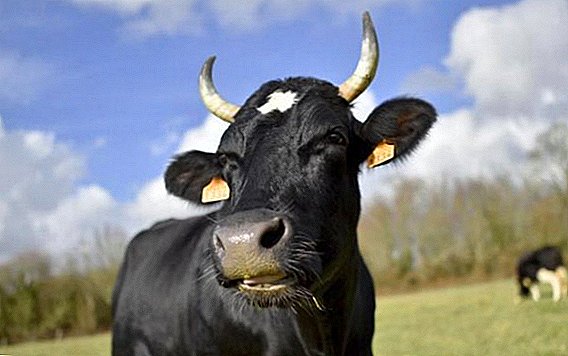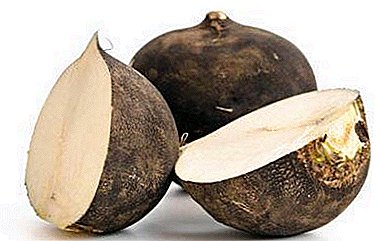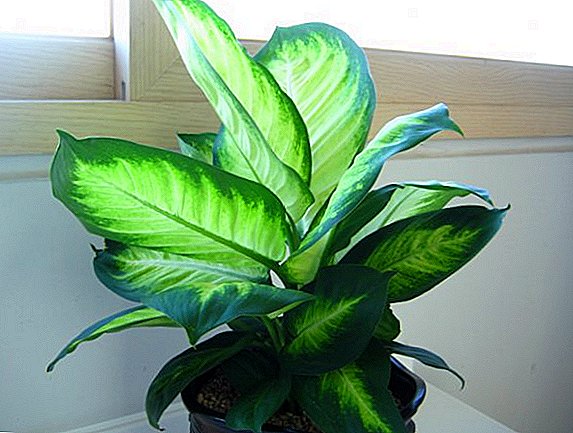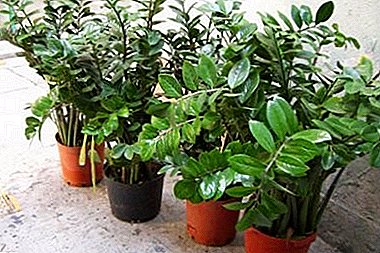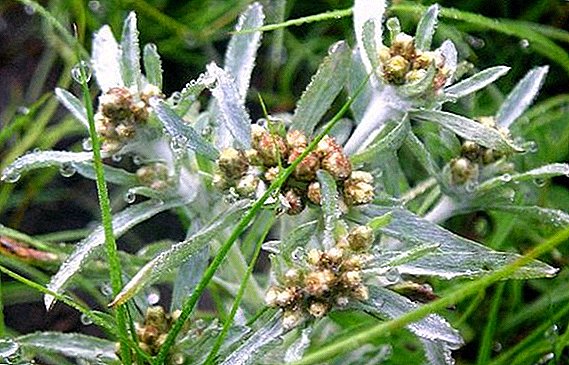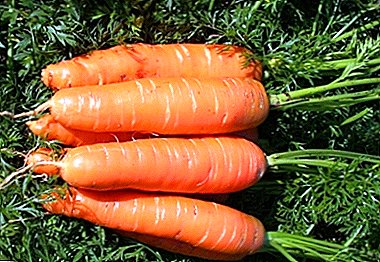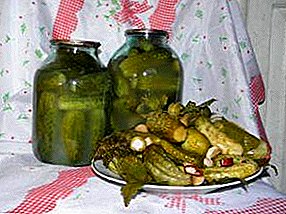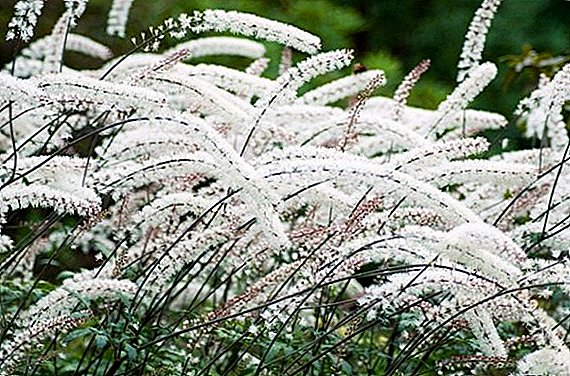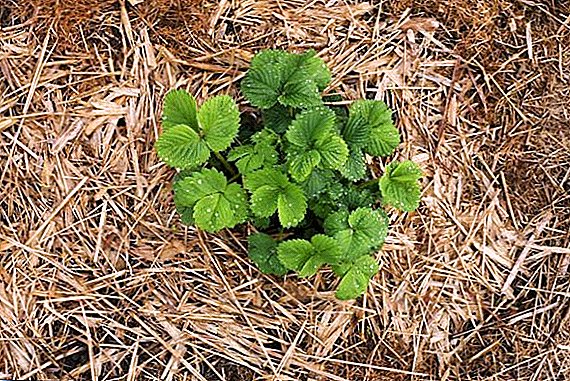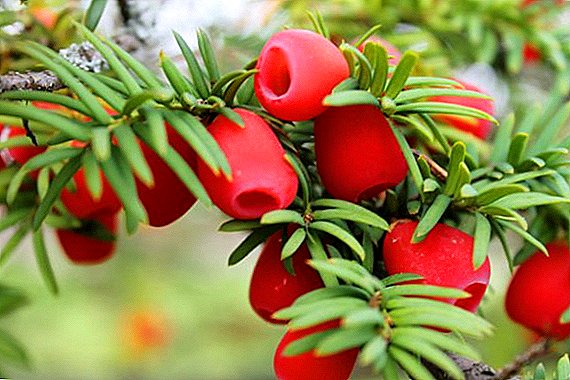 The main value of the yew is its beautiful decorative qualities, which were noted in the Baroque era. Today it is used as a hedge, as well as to create borders and to decorate the garden. Today we will tell you about the most popular types of yew.
The main value of the yew is its beautiful decorative qualities, which were noted in the Baroque era. Today it is used as a hedge, as well as to create borders and to decorate the garden. Today we will tell you about the most popular types of yew.
Yew berry
Yew berry - uhit is a slow-growing conifer, reaching a height of 15 m, with a broad crown, soft branching shoots and a bark of a reddish hue.
The plant blooms in early spring, but its flowers are not particularly attractive. Male flowers are similar to cones, located in the axils of the leaves, and female ones on the buds. At the end of flowering bright red fruits come out.
This berry also has one very important point in its description - absolutely all his varieties are poisonous.
Previously, berry yew was common in the forests of central Europe, but now it is considered a very rare species and is protected by law. Currently, there are many varieties of yew berry, the most popular of which are:
- Grade "Elegancessima". This is a perennial evergreen plant that grows by just one meter over 10 years. The crown of the bush reaches 1.5 meters. The branches of yew are sprawling and completely covered with needles. Needles from 1.5 to 2 cm long greenish-white color with a yellowish tinge. The first 6 years the plant grows very slowly, and then the increase in height and width is 25 cm per year. To care for the plant is quite simple. It grows well in the shade and tolerates frost.
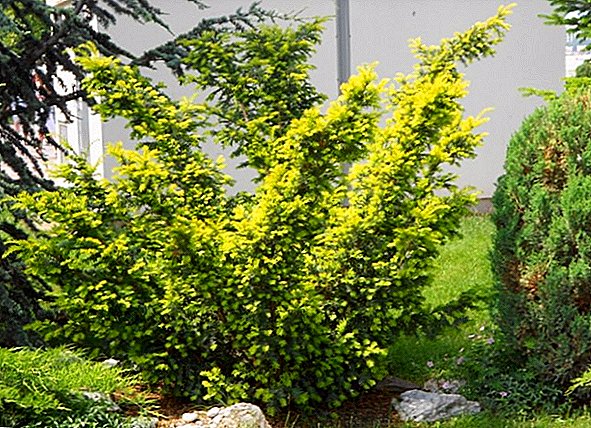
- Variety "Samergold." This variety differs from the above broad and flat shape of the bush. As in height and in width the bush grows no more than one meter. The needles are yellowish in color, and in the summer season they acquire a golden color, 2-3 cm long. The plant does not need scrupulous care, since neither shadow, nor sun, nor frost affect the development of this variety.
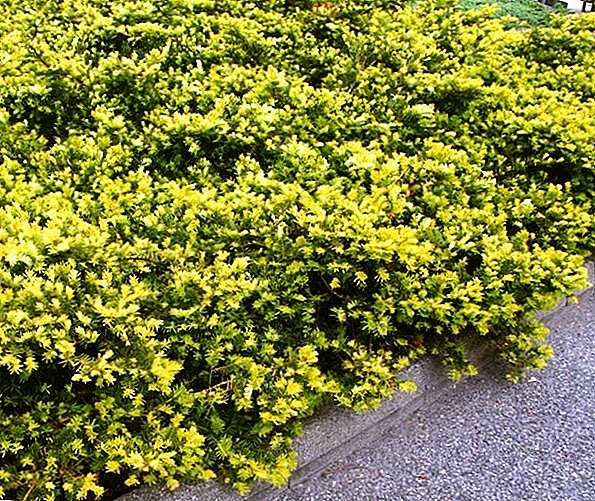
- Variety "David". Berry yew of this variety grows up to 2 m in length and 70-80 cm in width. Tees "David" is a perennial and evergreen. The needles are oblong, pointed at the ends. The plant develops better in moist rich soils, however, as experience has shown, yew also grows in dry soils. Berry yew of this variety belongs to the number of ornamental and adorns many gardens. This perennial plant can live for about 1000 years.
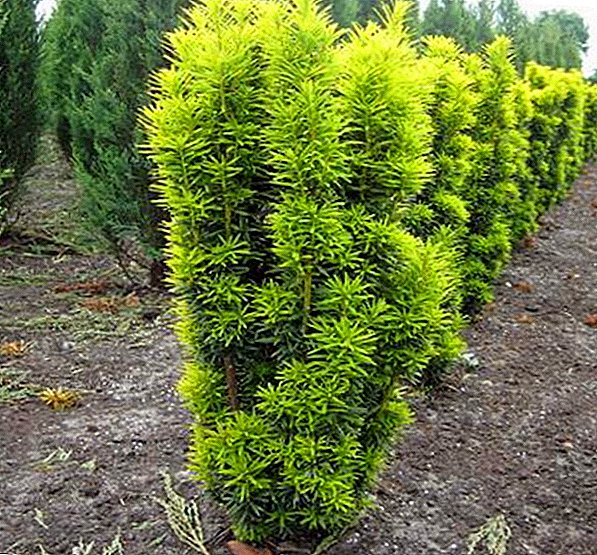
- Variety "Repandance". Berry yew varieties "Repandance" is a perennial, ornamental and evergreen. The needles are branchy and strongly sprawling. The shape of the crown is asymmetric, but due to the thick spreading branches it looks dense and fluffy. The needles of a greenish shade completely covers the branches. During the year, this yew grows about 10 cm. The adult plant reaches 4.5 m. Plant it better in bright, sunny places, since it fades in the shade.
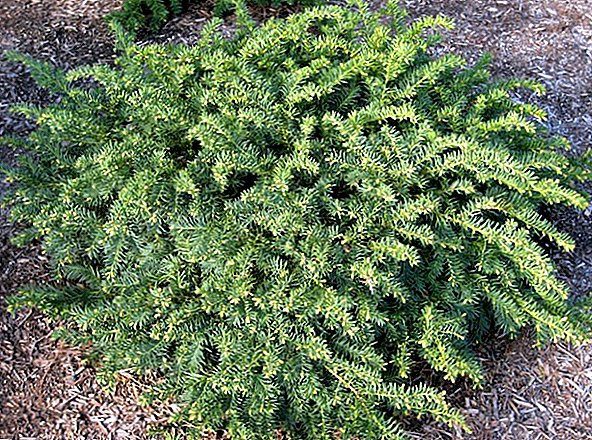
- Variety "Fastigiata". For 10 years, the berry yew of the variety "Fastigiata" grows up to 1.5 m. The crown shape has a columnar shape. The plant strongly branched shoots growing up. The main branches are hard, and the side are small and soft. And those and others are densely covered with needles. Needles are small in size, differ in a dark green color. This plant prefers fertile moist soil. This variety is thermophilic, so it needs to be warmed in winter.
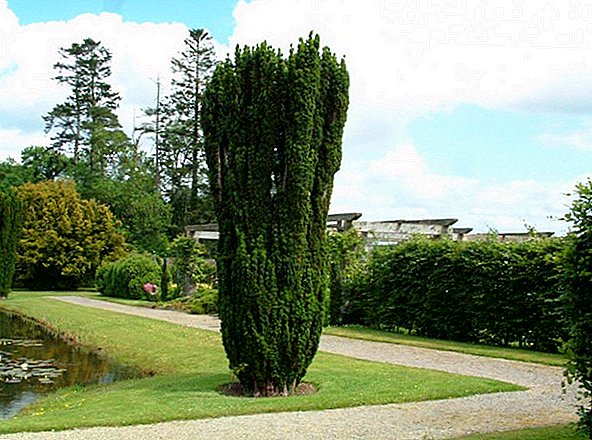
- Variety "Krzysztof". Berry yew "Krzysztof" has a Polish origin. It grows very slowly, in 10 years it grows by 1.2 m. The shape of the crown looks like a narrow column. The shoots of the plant are straight and solid, grow vertically. The needles of small size have a green color inside and yellow at the edges. It is this property that makes the plant even more attractive. To care for him is quite simple, since it does not require much effort. It develops well in the sun and in the shade.
- Variety "Fastigiata Aurea". The variety "Fastigiata Aurea" is a perennial, evergreen. The shape of the crown, like the previous variety, is similar to a narrow column. This yew grows slowly. The needles of young shoots are yellow, but with age it turns green, and yellowness remains only at the edges. For growth, this variety prefers semi-dark spots.
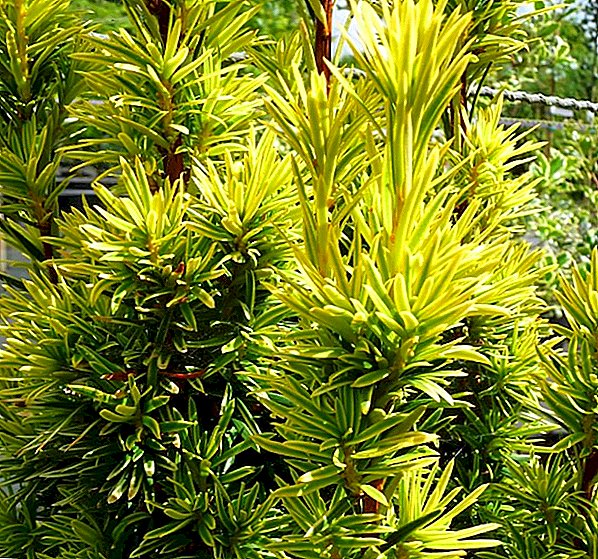
Did you know? In antiquity, yew was considered the tree of death. The branches of this plant were used for funerals. And in ancient Egypt, sarcophagi were made of its wood. The Slavs treated this tree as a magic tree and believed that it protects a person from diseases and evil spirits.
Spiky yew
Pointed yew is listed in the Red Book. It grows up to 20 m in height, but it grows very slowly. For 30 years, a yew grows by only 1.5 m. This species can live for about 1.5 thousand years. The crown is ovoid. The bark has a reddish-brown color with yellow specks. The needles are pointed, at the ends has a thorn. From above it is a dull green color, and below it is light green with yellowish stripes. Needles on the branches persist for about five years.
Pointed yew is among the shrubs with frost and dry-resistant varieties. He has no requirements for the soil. It grows well in shaded, polluted and smoky places. In adverse growth conditions, the plant takes the creeping shape.
So you can choose the pointed yew for your garden, here is a description of popular varieties:
- Sort "Dwarf Bright Gold". A semi-dwarf variety with golden needles, which is a slow-growing plant up to 1.2 m high. The shape of the crown is irregular, roundly flattened, dense. The branches grow up. Shoots are not long, thick. At the needles bright yellow border.
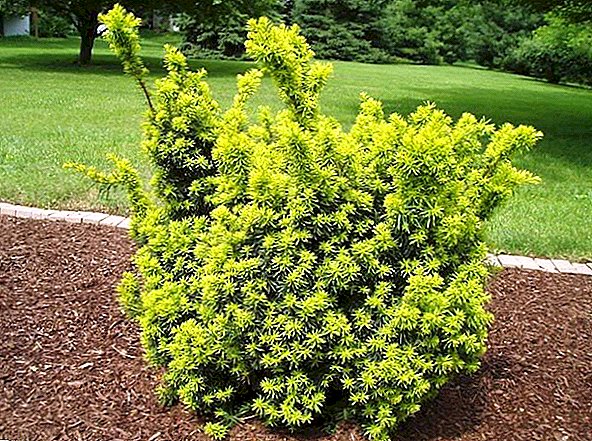
- Sort "Monloo". Over ten years of its life, the plant grows to a height of only 0.8 m, and 3 m wide. The shape of the crown is small, flat and has the appearance of a pillow. The branches grow in a horizontal direction, rather thickened. The leaves have a dark green color and evenly cover the shoots.
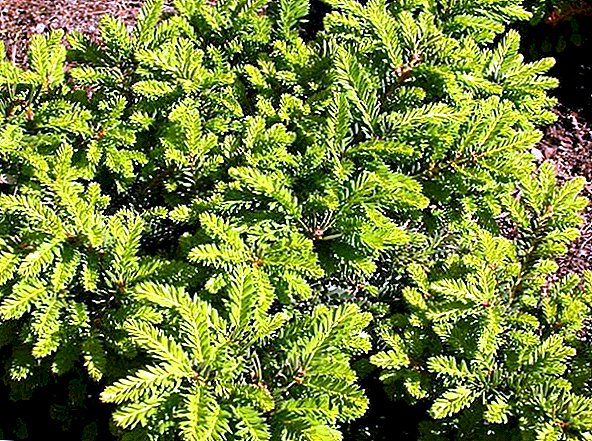
- Sort "Nana". The variety is one of the slow-growing ones, since in 30 years the plant reaches only 1.5 m in height and 2.6 m in width. The shape of the crown is compact. The branches are short and directed upwards. The needles are small, two-row and protruding.
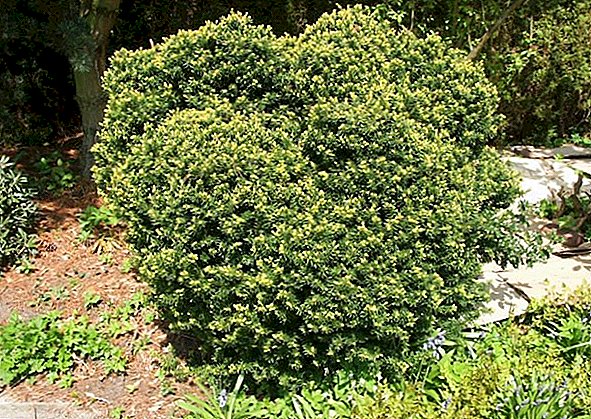
Important! The yew contains taxin - a poisonous alkaloid. The most toxic parts of the yew are needles and seeds, after contact with which it is very important to thoroughly wash hands.
Yew average
This species of yew has similarities with the berry and spiky species. It grows faster than the berry. The branches are olive-green in color, and in the sun acquire a reddish color. Shoots tend up. The needles are similar to the needles of a pointed yew, but the needles are arranged in two rows. Their length is 1.3-2.7 cm, and width 0.3 cm.
Every year the plant bears fruit. Seeds ripen by the end of summer - the beginning of autumn. The middle yew is characterized by resistance to drought and frost. The advantage of the plant is the ease of reproduction by cuttings.
There are about forty varieties of medium yew. The most common varieties of yew trees of this species are:
- Variety "Hatfieldii". The plant has an average height of about 4 m, and a width of 3 m. The shape of the crown is pyramidal. The branches grow vertically, and the needles on them are radial and two-row.
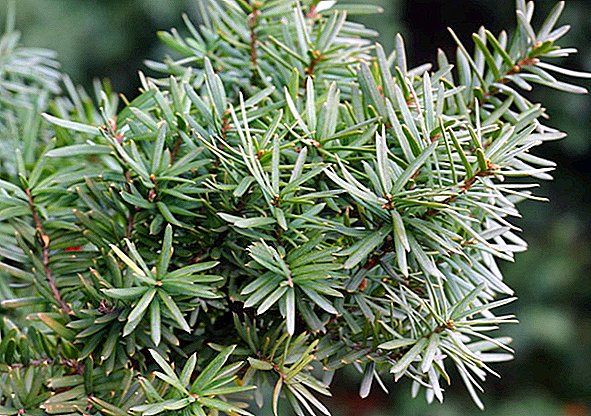
- Variety "Hicksii". Male and female clones. It grows in height by 4 m, width by 3 m. The crown of the tree has the form of a column, but extends upward slightly. The needles on the vertical shoots are radially, and on the side two rows.
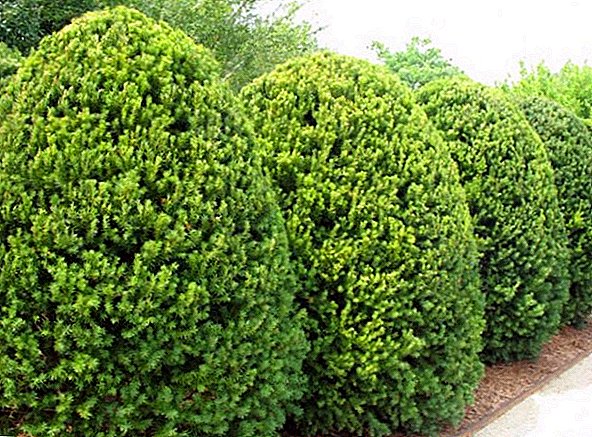
- Variety "Hillii". The height of the plant reaches 4 m, and its width is 3 m. The shape of the young crown is oval, but in the process of growth it becomes wide-columnar. Skeletal branches grow vertically, the side branches are short.
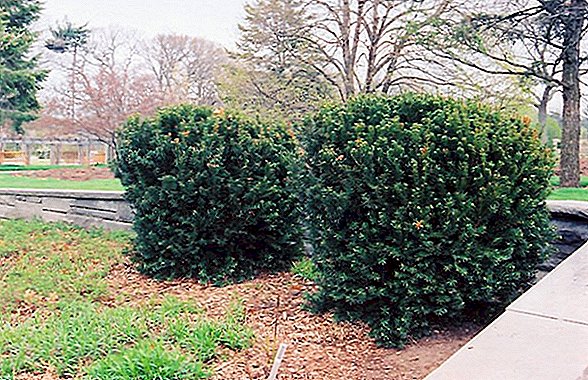
- Variety "Taunton". The plant is dwarfed. Its height is 1 m, width 1.5 m. The krone has a round flat shape. The branches are slightly sprawling and tend upwards. The needles have a bright green color. This variety belongs to winter hardiness.

Yew canadian
Yew canadian grows in swampy forests and ravines of northern North America. Over the 15 years of its life, the shrub grows by 1.3 m, with a crown diameter of 1.5 m. In terms of how many years a yew lives, the Canadian species of these trees is a record holder, since there are representatives on the earth at the age of 1500 years. 
The Canadian yew has a brownish bark and sharp yellow-green, slightly curved needles 2.5 cm long and 0.2 cm wide. The plant blooms in early spring. The fruits have a spherical shape, similar to the berry. The advantage of the type is high frost resistance.
Did you know? In the distant past, the natives used shrub wood to make oars, bows, and other items. Indians managed to find medicinal properties in Canadian yew. From the needles, they prepared a decoction and used it in the treatment of rheumatism, fever, scurvy and as a painkiller.
Canadian yew has a shallow root system. At the ends of the roots is mycorrhiza. The shoots are mostly solid, strong, grow straight. In adult trees, the shoots are recumbent, and the branches are ascending. 
Did you know? Yew wood is very valuable. It is characterized by such properties as strength, durability and resistance to moisture and microorganisms.
Yew is short
Short-leaved yew trees can be found in western North America along the Pacific coast and mountain ranges, as well as on the banks of streams, rivers and lakes, in deep canyons. It grows singly and in groups.
Yew is short - it is a slow-growing plant with a height of 5 to 15 m. Crohn has the shape of wide pins. The branches are thin, grow horizontally or upward, young shoots hang down. The needles are yellow-green, two-row, have a length of 1 cm and a width of 0.2 cm, pointed at the ends.  Short-leaved yew unpretentious, can grow in any soil, but prefers loam. You can grow yew in the sun and in the shade. This species tolerates severe frosts very well.
Short-leaved yew unpretentious, can grow in any soil, but prefers loam. You can grow yew in the sun and in the shade. This species tolerates severe frosts very well.
Did you know? Over the past three generations, yew plantings in nature have decreased by almost 30%. The blame is on deforestation, fires and harvesting yew wood.
Yew - this is a very unpretentious plant, so decorate your garden with this plant will not be difficult. A variety of forms of yew will allow you to create various decorative compositions that will make your garden unique.















